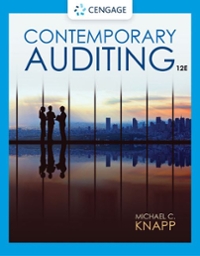Question
Lenovo was a multibillion-dollar Fortune Global 500 company listed on the Hong Kong Stock Exchange. Its 60,000 employees worldwide supported operations in 60 countries and
Lenovo was a multibillion-dollar Fortune Global 500 company listed on the Hong Kong Stock Exchange. Its 60,000 employees worldwide supported operations in 60 countries and served its customers in over 160 countries.It manufactured a variety of computers, from smartphones to servers. Its sales were US$45 billion in fiscal year 2016.
Three decades earlier, the company, then called Legend, had started in a small Beijing bungalow. Liu Chuangzhi, a computer scientist, and 10 engineers founded the company in 1984, aiming to run the business by developing new technologies. They tried importing televisions and marketing a digital watch. But these attempts failed, along with other early ones, as many of the founders lacked business experience and concentrated only on product quality.
Growth
The initial struggles helped the company learn about the latest computing technology from abroad and the consumer market in China. The company’s first success was in developing circuit boards to enable PCs by IBM to process Chinese characters. The company started to grow; after a recruitment advertisement on the front page of the China Youth News in May 1988, it hired 58 people. In 1990, it began to manufacture and market computers under its own Chinese brand name. Only in 2004 did it adopt Lenovo, consisting of Le from Legend, its previous English company name, and novo, Latin for new.
While the company broadened its product range to workstations, servers, digital entertainment devices and mobile phones, its PC business remained at the core. It grew rapidly thanks to a quickly expanding Chinese PC market. Its share mushroomed from 14% in 1998 to 30% in 2000.7 It raised US$212 million from its second public offering in 2000 to fund its continued growth. Lenovo also saw an opportunity to grow internationally and in 2005 bought IBM’s PC division for US$1.25 billion. The company’s turnover almost quadrupled in size.
In the decade after acquiring IBM’s PC division, Lenovo realized steady growth in revenues, except for one year during the financial crisis.9 The primary drivers of growth were an increase in PC sales and the acquisition of new businesses. In 2011, the company bought NEC, Japan’s largest PC vendor at the time, and Medion, a large German consumer electronics company. Two years later, it acquired CCE, a large Brazilian consumer electronics company.10 These acquisitions helped Lenovo become a dominant player in the PC market worldwide. By 2016, the company had reached record shares of the PC market in all geographical areas: 36.5% in Greater China, 17.5% in Asia-Pacific (excluding Greater China), 13.7% in the Americas and 20.0% in Europe, the Middle East and Africa.
Personal Computers
In 2016, Lenovo seemed to do relatively well in the extended PC market. It was the world’s largest vendor of traditional PCs for the third straight year and one of the largest vendors of tablets. While outgrowing the market was a source of pride, the growth of the market itself was a cause for concern. For several years, the total number of PCs sold worldwide had been declining. Desktop computers had long been the dominant form of computers, until laptop sales overtook desktop sales in 2008. The rapid adoption of tablets caused their sales to overtake that of laptops in 2011. Relying less on a single computer, people waited longer to upgrade their PC. It also became easier to run modern operating systems on older machines. The average upgrade cycle slowed from about four years to five or six years in 2016.
Case Question 1: Compare the characteristics of Lenovo’s organizational size when it started in 1984 to its characteristics in 2016. (6 marks)
Case Question 2: Outline and discuss the stages of Lenovo’s life cycle. (12 marks)
Case Question 3: With desktop computer sales on the decline, Lenovo could possibly also face organizational decline. Discuss the stages Lenovo would possibly go through as it declines. (12 marks)
Step by Step Solution
3.39 Rating (143 Votes )
There are 3 Steps involved in it
Step: 1
1 When comparing Lenovos organizational size in 1984 to 2016 several key characteristics stand out 1984 Founding Lenovo then Legend was founded in a small Beijing bungalow by Liu Chuangzhi and 10 engi...
Get Instant Access to Expert-Tailored Solutions
See step-by-step solutions with expert insights and AI powered tools for academic success
Step: 2

Step: 3

Ace Your Homework with AI
Get the answers you need in no time with our AI-driven, step-by-step assistance
Get Started


